Top 10 most famous architectural works in France #2
France is the largest country in Western Europe, the third largest in Europe and has the second largest exclusive economic zone in the world. France is a republican country. As a traditionally Catholic country, France was once known as the "Eldest Daughter of the Catholic Church". Through this, we can see French culture with strong Catholicism from architectural works, and at the same time, there is also modern innovation in every French feature. France has gone through more than a thousand years of construction and development, but those works are still kept intact and preserved until now. In this article, I will introduce to you famous works that bear the symbols of France.
4.Versailles Castle
Versailles Castle, commonly known as the Palace of Versailles or simply Versailles, was the residence of French kings (and queens) Louis XIII, Louis XIV, Louis XV and Louis XVI. Located in the west of Paris, the castle is a symbol of authority, splendor and massiveness.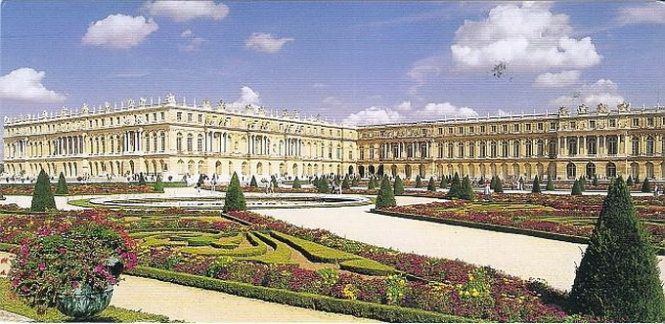
With a 67,000 square meter palace with over 2,000 rooms and a park covering an area of 815 hectares, Versailles is one of the most beautiful and largest castles in Europe and the world. In 1979, Versailles Castle was included in the list of World Heritage Sites by UNESCO. Versailles Castle is located west of Paris and is considered a symbol of the power of the French feudal dynasty. The castle gathers many famous, massive and splendid architectural works of France.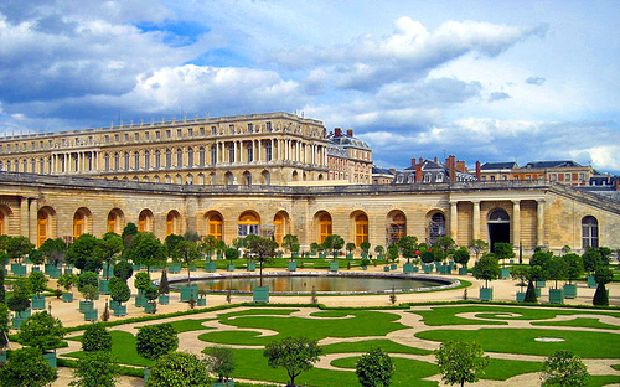
In the 10th century, monks built the first building on this land, which was the church - Saint-Julien monastery. From there the small town of Versailles began to appear. A small castle of the lord of Versailles began to replace the old church, and three years later it was ceded to the bishop of Saint-Germain. On this land, King Louis Versailles forest, a small building made of brick and stone as a stopping point. Later, the king bought more land and built the first marble palace in this castle. In 1632, the king ordered construction to begin expanding the castle. In 1634, King Louis XIII died, and the castle was passed on as inheritance to King Louis XIV.
5.Arc de Triomphe
Construction of the Arc de Triomphe began in 1806 on Étoile Square, according to the decision of Emperor Napoleon Bonaparte, after the Austerlitz victory, as a work honoring the army, commemorating the glorious victory of the armies. France. But Emperor Napoleon's First Empire collapsed and halted the construction of the Arc de Triomphe. By 1825, construction continued. In 1836, the Arc de Triomphe was inaugurated by King Louis-Philippe. The Arc de Triomphe is one of the most famous works in Paris and, along with the Champs-Elysées, is the venue for important festivals and events in Paris. city. The Arc de Triomphe has a nearly square facade, 45 meters wide, 50 meters high, located on a square with a diameter of 240 meters.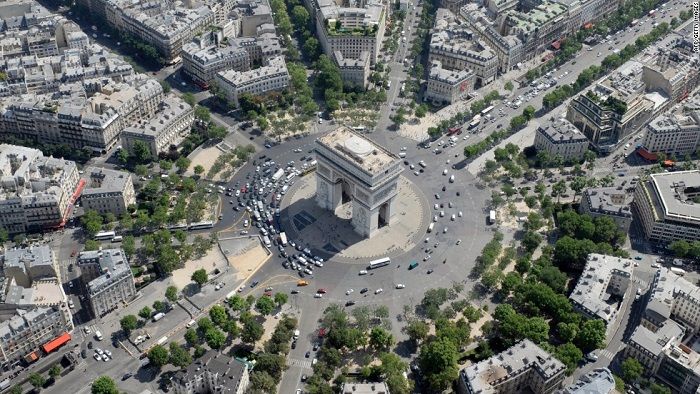
The sides of the building are decorated with many reliefs, monuments and engraved names of famous figures during the Revolutionary and Imperial periods. The four largest sculptures are: Departure 1792 and Triumph 1810 on the Champs-Elysées side, Resistance 1814 and Peace 1815 on the Grande-Armée side. 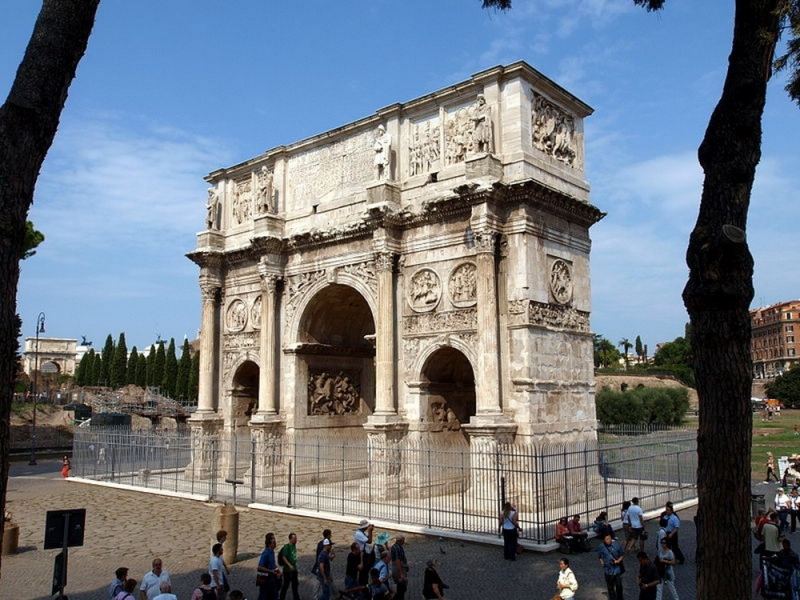
The inside of the four legs of the Arc de Triomphe is decorated with bas-reliefs depicting famous battles during the Revolution and Empire. Below are engraved the names of famous figures from that historical period. Six bas-reliefs, four above the monuments and two on the sides, depict stages and events of the French Revolution and the Empire. In addition, the surface of the Arc de Triomphe also has other small reliefs.
6.Concorde Square
Concorde Square is one of the famous squares of Paris, located at the eastern end of the Champs-Élysées Avenue, right on the banks of the Seine River, one side adjacent to the Tuileries Garden and in District 8. It is an architectural work to congratulating King Louis XV on his recovery from illness, the place is called Louis XV Square. Concorde is the largest square in Paris, 2nd in France and 11th in the world. This square is completely opposite to the closed space ancient squares. Here, open space is maximized along with landscapes and trees. In the period before the French Revolution, especially in 1948, the city of Paris built a square with a statue of King Louis XV riding a horse to celebrate the king's recovery after many illnesses in Metz. At this time, the square was named after King Louis XV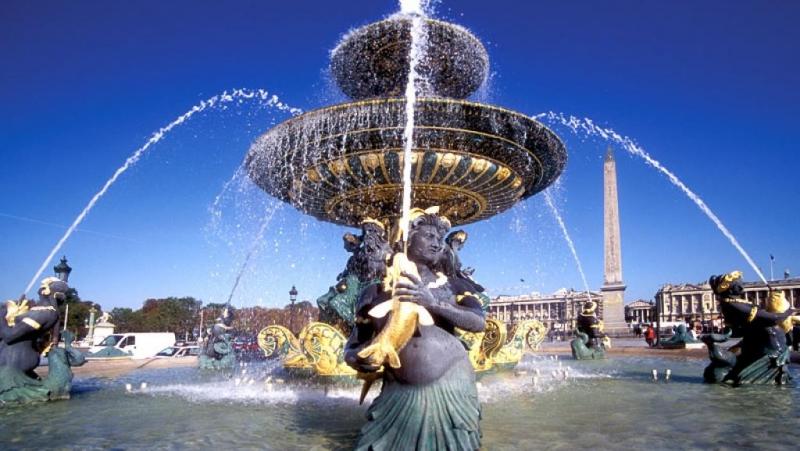
By the years 1772 - 1176, the square was gradually completed and the inside was divided into 4 grass plots. During the French Revolution, Concorde Square had sad stories when the guillotine was placed here. Queen Marie Antoinette and King Louis XVI were executed. In 1973, the statue of King Louis XV was dismantled and replaced by a plaster statue with a red hood on his head and a machete in his hand symbolizing freedom. 
But later the statue was deleted. Through a bloody period both before and during the revolution, along with the formation of the royal family after the French Revolution, Concorde Square became a political topic of the government throughout the 19th century. Until 1830. After many disputes, the square received a new name, Concorde. There was a time in 1993 when the Act Up organization covered the pole with a giant condom up to 30 meters long on the occasion of International AIDS Prevention Day. Therefore, the square is also known as the square of AIDS victims.
7.Pont des Arts Love Bridge
Pont des Arts in French means bridge of arts. This is a pedestrian bridge spanning the Seine River in Paris, France, connecting the Institut de France and the square courtyard of the Louvre Museum. Couples walk together on the bridge, exchange kisses and lock their lovers' locks together on the bridge. After picking the lock, throw the key into the Seine River. Legend has it that a lock is an object that connects two people. Once locked and the key thrown away, it cannot be opened and cannot be separated. Pont des Arts, also known by its familiar name, Lock Bridge, is considered a symbol of the emotional bond between a couple. The bridge built in 1801 under Napoleon Bonapart was the first metal bridge in Paris. The bridge has a total of 9 spans to serve the sightseeing needs of people. After nearly eight decades of experiencing many historical ups and downs, being devastated by bombs and even collapsing due to a boat accident, in 1981 the Pont des Arts was officially restored to its current design.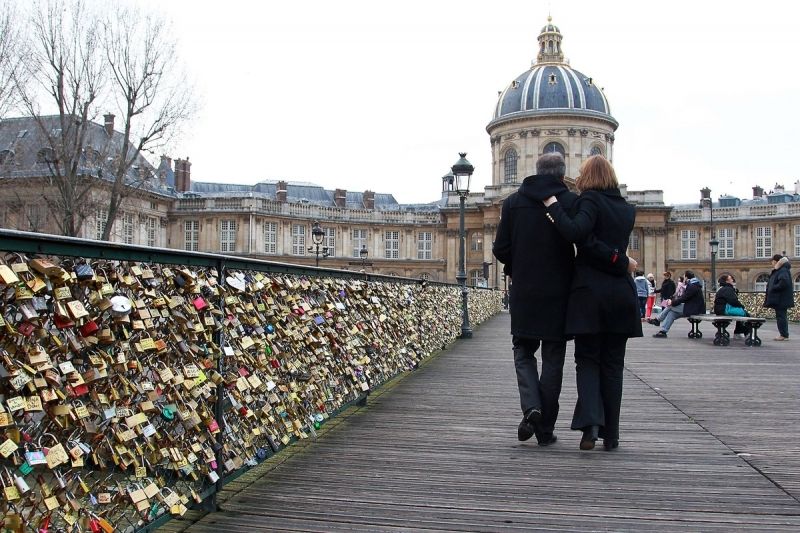
In addition, this bridge is also an ideal place to enjoy art in Paris. Because photographers, painters, street artists... often choose this as a place to hold art exhibitions. Starting in 2008, the Pont des Arts began to be known as the Love Lock Bridge. Because when walking through here, you can easily feel the breath of colorful love through each lock that couples hook to the bridge and then throw the key into the river bed, carrying within it the hope of an everlasting love. the eternal.
The theme of love always attracts all souls of all ages. This is considered a place to prove eternal love and sacred promises. But around mid-2015, the city government removed the brilliant locks on both sides of the bridge to ensure the safety of the bridge from the weight of the locks. However, this legendary bridge has gone deep into the heart and has not reduced the number of tourists coming here. Now when you come to Pont des Arts you will witness a completely different scene but without losing its inherent romance and charm.





























